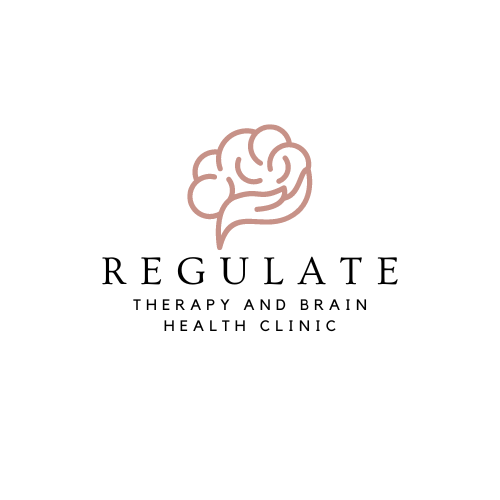Let’s Talk About Our Bodies
I once worked with a six year old girl who called herself “fat.” She had tears in her eyes when she talked about her body. She compared herself to the girls in her class and shared general dissatisfaction with her looks over-all.
Nearly eight percent of women will experience an eating disorder (ED) in her lifetime and women are twice as likely than men to acquire one (Deloitte Access Economics, 2020). More than half of those with an ED also struggle with symptoms associated with anxiety or a mood disorder (National Institute of Mental Health). There are three main eating disorders. Anorexia is not eating enough, over-exercising, or using laxatives to decrease BMI to unhealthy levels. Bulimia disorder is over-eating in short amounts of time and then finding ways to rid the body of the food whether that be through purging, fasting, or over exercising. Binge eating disorder is extreme over-eating in short amounts of time (where often the body is unable to communicate feelings of being full).
What’s scary is that eating disorders have one of the highest mortality rates among those with mental illness, (second to only opioid over-dose), and nearly 1 out of 4 with an ED will attempt suicide in his/her lifetime (Arceles et al., 2011).
That’s scary stuff.
Remember that “neurons that fire together wire together.” This basically means that our brains create codes and pathways based on experiences, habits, activities, and relationships that we engage in. When we pair isolated emotionally intense experiences (positive or negative) or any repeated experiences with rewarding neurotransmitters (dopamine, oxytocin, epinephrine) or fear/shame, these pathways strengthen accordingly.
Additionally, our thoughts, feelings, and behaviors are related. The way we think about things impact how we feel, and how we feel impacts how we behave (this is the cognitive behavioral model).
For someone with an unhealthy relationship with food and health, these codes in our brain could develop and be reinforced from the following scenarios.
A teenage girl in cross country perceives that the girls that are winning the races are thinner than her. Her brain associates thinness with success and winning. She starts to restrict her eating.
A 4-week post-partum mom sees a friend returning to her pre-baby body after only a couple weeks after delivery and thinks she should be fitting in her clothes by now. She feels shame and eats to comfort herself (she’s rewarded by dopamine from glucose—a pathway that was strengthened when she used food to combat boredom as a kid). She feels shame again for over-eating and becomes depressed.
A girl hears her mother talk negatively about her body and how her clothes fit. The child adopts the belief that being thin is important to be happy. She engages in thoughts, feelings, and behaviors that support a life of obsessing over being thin and feeling shame when she perceives herself as overweight.
For someone with a healthy relationship with food and fitness, these “codes” could develop and be reinforced from the following scenarios:
A teen is consistently praised by her coach and support system for working hard and keeping a positive mindset. Her brain releases dopamine and a pathway is strengthened between working hard and athletic success.
A mom of three is 4-weeks post partum and sees her friend returning to her pre-baby body after only a couple weeks. Mom is able to think about how she and her friend are quite different. Her friend is not nursing and has one child (not three). Mom feels content and decides to eat sensibly to be able to have energy and prioritize feeding her baby.
A girl observes her mom prioritizing exercise, choosing healthy foods, and enjoying treats without guilt. Mom only talks about her body being strong. The daughter associates exercise and health with happiness. Her brain knows nothing about the relationship between shame and weight.
What we pay attention to matters. How we think about things matters too. Engaging in consistent practice of “thinking about our thinking” (otherwise called meta-cognition) is a healthy habit to form. The concept of neuroplasticity (the re-wiring of our brain) gives us hope!
Keeping a journal to correct and refute thoughts that have little to no evidence to support them can help you think more positively and be more kind to yourself over-all. Detecting and receiving treatment for eating disorders is incredibly important given the concerning suicide attempt and mortality rates.
I believe there’s a reason why God tells us to take “every thought captive” (II Corinthians 10:5). Satan knows that the lies he tells us can cause everything to swing in his direction. Don’t let him do that. He’s a liar.
You deserve to feel healthy, strong, and have a positive relationship with food. Let’s re-wire some of those maladaptive codes and strengthen the good ones.
References
Arcelus, J., Mitchell, A. J., Wales, J., & Nielsen, S. (2011). Mortality rates in patients with anorexia nervosa and other eating disorders. A meta-analysis of 36 studies. Archives of General Psychiatry, 68(7), 724–731. https://doi.org/10.1001/archgenpsychiatry.2011.74
Deloitte Access Economics (2020). The social and economic cost of eating disorders in the United States of America: A report for the strategic training initiative for the prevention of eating disorders and the academy for eating disorders. https://www.hsph.harvard.edu/striped/report-economic-costs-of-eating-disorders/.
National Institute of Mental Health (n.d.) Eating disorders. https://www.nimh.nih.gov/health/statistics/eating-disorders
